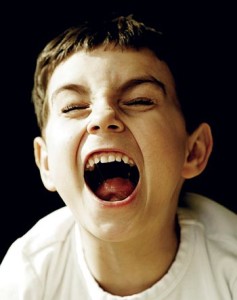 ADD is an abbreviated form of Attention Deficit Disorder. In the current medical world, ADD is now known as Attention Deficit Hyperactivity Disorder or ADHD.
ADD is an abbreviated form of Attention Deficit Disorder. In the current medical world, ADD is now known as Attention Deficit Hyperactivity Disorder or ADHD.

ADD is a behavioral disorder that is chronic in nature and is characterized by inattentiveness, hyperactivity and impulsivity. It is not necessary that children afflicted by the condition are going to elicit all the three characteristics. They may either show one or two or all three behavioral categories. This results in the classification of ADD into three subtypes which are:
- Predominantly inattentive
- Predominantly hyperactive and impulsive
- A combination of the above two subtypes
Children are more likely to be affected by this disorder than adults and boys are four times more likely to exhibit the symptoms of Attention Deficit Disorder than girls. A person who has ADD in childhood may or may not have ADD in adulthood.
ADD generally tends to affect various aspects of social, educational, interpersonal and emotional functioning of an individual and hence is a very serious disorder. It is essential to diagnose ADD at the earliest and get the relevant treatment.
Symptoms of ADD in children
The symptoms exhibited by children with ADD are listed below in three broad categories:
Inattention–
- Tasks that require a lot of mental effort and time are generally disliked, avoided and shirked by children
- Tasks and activities that require organizational skills pose many problems to them
- They find it difficult to listen when someone speaks to them directly
- Sustaining attention on different tasks and school activities seems difficult for the children
- Instructions given to them are not followed through which results in failure to complete chores, schoolwork and other duties. This is not because of a failure to understand instructions or rebellious behavior but due to inattention
- Children with ADD are easily distractible
- They are prone to skip the details without paying them due attention. This usually results in them making careless mistakes in schoolwork or other such activities.
- They are prone to losing things and objects that may be essential for school tasks and other activities such as pencils, books, project work, etc.
- They are generally forgetful of the day’s activities and thus cannot adhere to a schedule.
Hyperactivity–
- The children may excessively run around or indulge in climbing activities even if the occasion is inappropriate for such activities
- They are boisterous and super active which generally leads to despair and trouble in quiet enactment of play or leisure activities
- The child with ADD may have excessive or over-elaborative speech
- They are often very restless and fidgety with their hands and feet and may constantly wiggle on their seats
- They may not remain in a seated position and may often leave the places where remaining seated is mandatory
Impulsivity–
- Children with ADD generally tend to intrude or interrupt the conversations or activities of others
- They usually have trouble waiting for the question to complete before they end up blurting out the answer
- They have trouble waiting for their turn in case of a queue or otherwise
Causes of ADD in children
- There are no exact or definite causes of Attention Deficit Disorder in children.
- Some research studies that included neuro-imaging studies have indicated at abnormalities in the brain, but have mostly been inconclusive.
- Abnormalities in the functioning of the brain chemicals or neurotransmitters have also been thought to cause the disorder but even this has yet to be ratified.
- Studies have also indicated that ADD has a genetic basis and tends to run in families. So children who have a family history of ADD are more likely to be affected by the condition than others who do not have relatives with the disorder.
Treatment of ADD in children
The increasing awareness of Attention Deficit Disorder has lead to vast improvements in treating the condition. Also, greater education and awareness among the teachers and parents about the condition has made the early diagnosis of ADD in children a whole lot easier.
Some of the treatment methods of ADD in children are as follows:
- Psychotherapy that involves cognitive-behavioral therapy is one the best ways to treat ADD in children. In this, the affected children are taught to recognize the deficits in their behavior. They are also given organizational skills to rectify the abnormal behavior as well as coached on aspects of normal behavior that is lacking in them. Parents as well as teachers can also contribute to the therapy by rewarding good behaviors and punishing bad ones.
- There are several medications such as stimulants and tricyclic antidepressants that can be prescribed by a doctor to treat ADD in children. However, a lot of these drugs have several side effects. Parents and doctors should come together to choose the best medication with the least number of side effects. This can be made possible through regular feedback about the effect of the medications on the child with ADD.